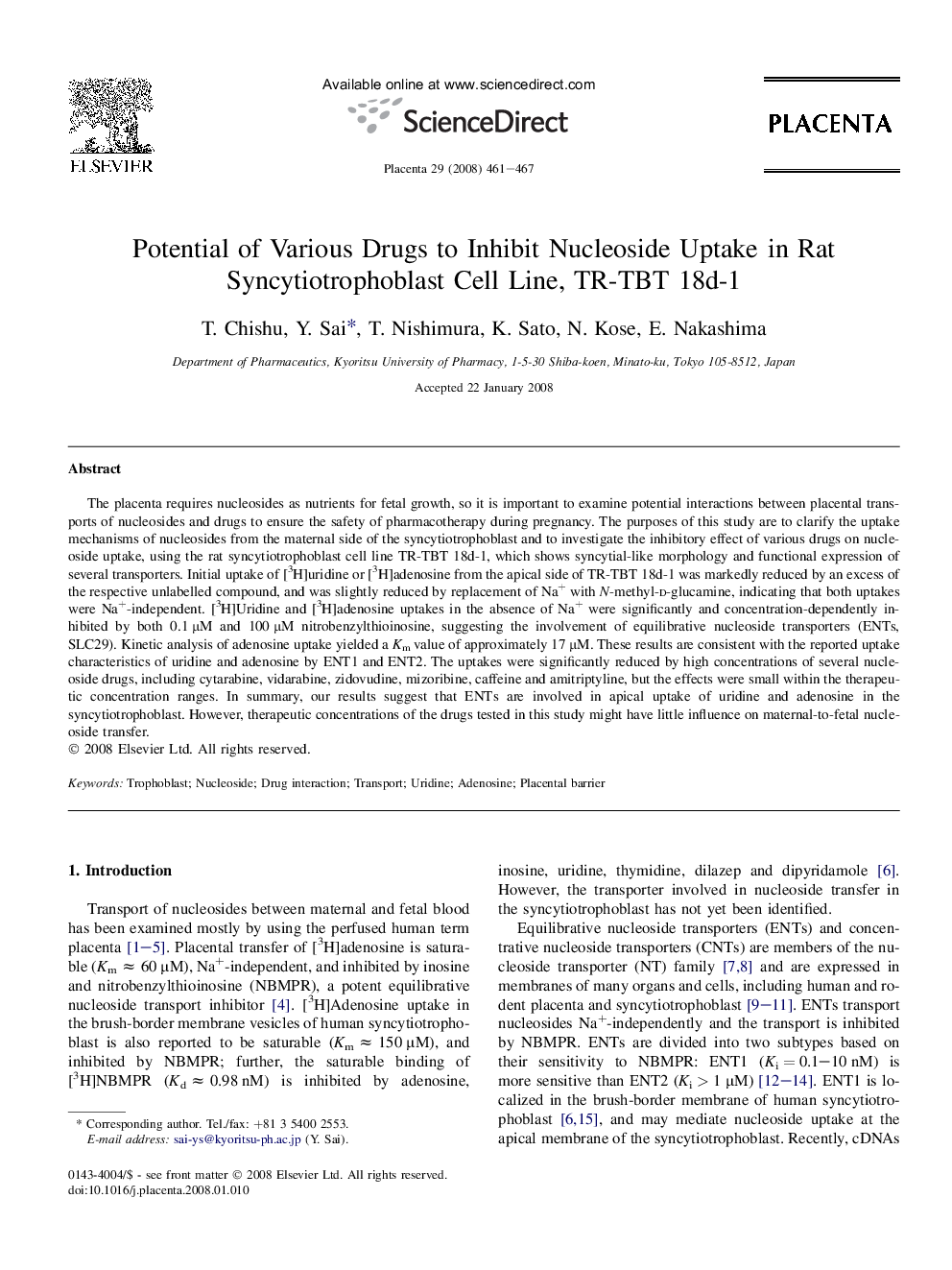| Article ID | Journal | Published Year | Pages | File Type |
|---|---|---|---|---|
| 2790295 | Placenta | 2008 | 7 Pages |
The placenta requires nucleosides as nutrients for fetal growth, so it is important to examine potential interactions between placental transports of nucleosides and drugs to ensure the safety of pharmacotherapy during pregnancy. The purposes of this study are to clarify the uptake mechanisms of nucleosides from the maternal side of the syncytiotrophoblast and to investigate the inhibitory effect of various drugs on nucleoside uptake, using the rat syncytiotrophoblast cell line TR-TBT 18d-1, which shows syncytial-like morphology and functional expression of several transporters. Initial uptake of [3H]uridine or [3H]adenosine from the apical side of TR-TBT 18d-1 was markedly reduced by an excess of the respective unlabelled compound, and was slightly reduced by replacement of Na+ with N-methyl-d-glucamine, indicating that both uptakes were Na+-independent. [3H]Uridine and [3H]adenosine uptakes in the absence of Na+ were significantly and concentration-dependently inhibited by both 0.1 μM and 100 μM nitrobenzylthioinosine, suggesting the involvement of equilibrative nucleoside transporters (ENTs, SLC29). Kinetic analysis of adenosine uptake yielded a Km value of approximately 17 μM. These results are consistent with the reported uptake characteristics of uridine and adenosine by ENT1 and ENT2. The uptakes were significantly reduced by high concentrations of several nucleoside drugs, including cytarabine, vidarabine, zidovudine, mizoribine, caffeine and amitriptyline, but the effects were small within the therapeutic concentration ranges. In summary, our results suggest that ENTs are involved in apical uptake of uridine and adenosine in the syncytiotrophoblast. However, therapeutic concentrations of the drugs tested in this study might have little influence on maternal-to-fetal nucleoside transfer.
